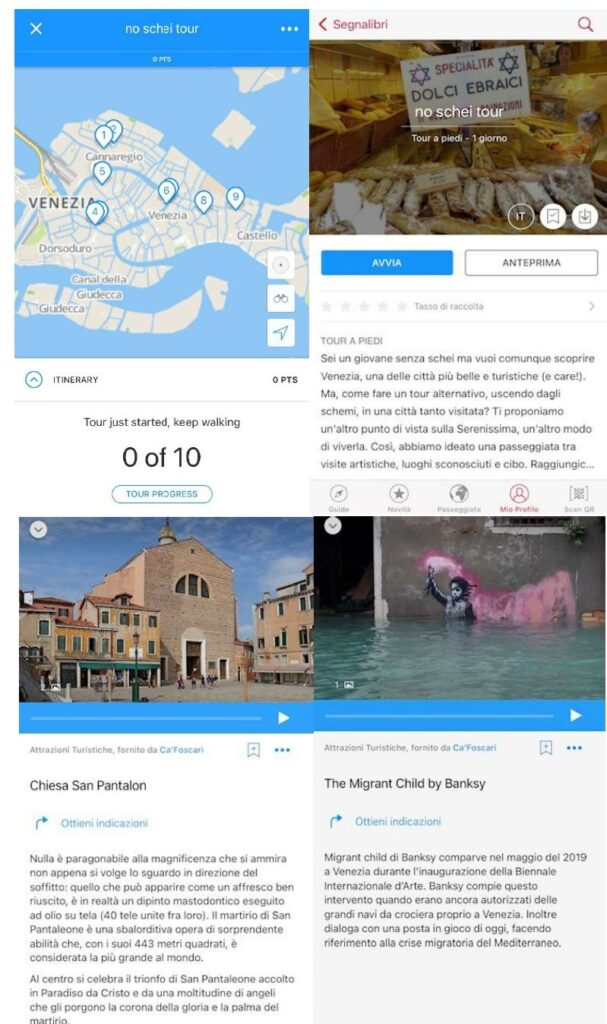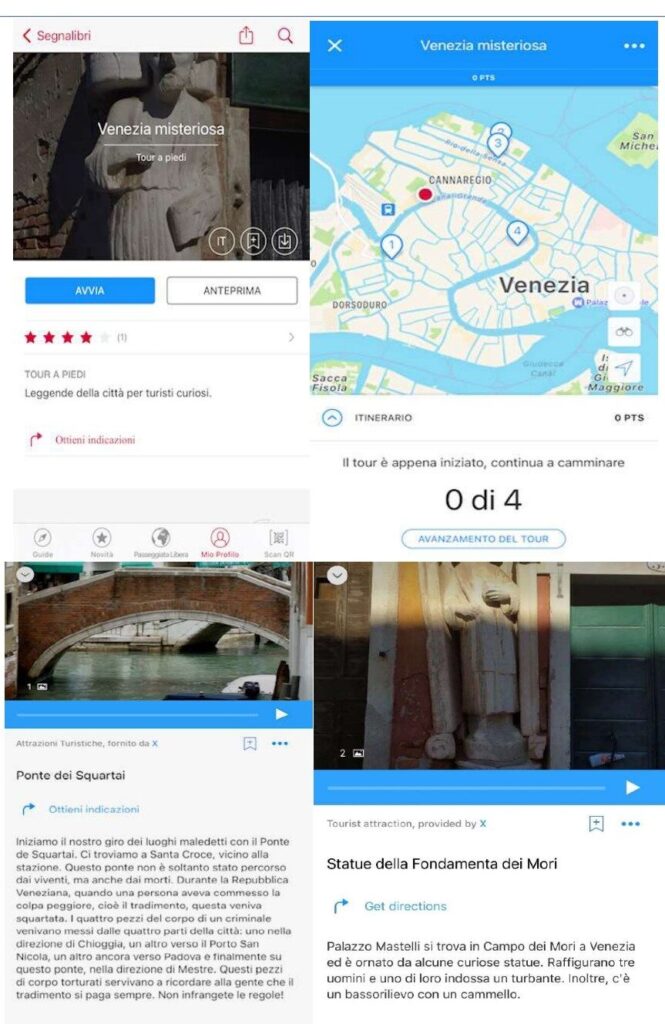Designing Digital Audio Guides for Language Learning with izi.Travel
By Ilaria Compagnoni – Ca’ Foscari University of Venice, Italy

izi.TRAVEL (“easy travel”) is an open-course digital travel guide with audio tours, multi-media content available in 13 languages with storytelling capabilities. Devised by a team of Dutch innovators, it allows users to record their speech and upload pictures of city landmarks and museum collections to create and publish audio guides. Further platform tools include the addition of treasure hunts and interactive quizzes to increase audience engagement. One asset of izi.Travel is that it is open and free-of-charge with a variety of available destinations, from city tours to visitor guides through museum collections. As an additional resource, the application assigns QR codes to each tour, facilitating content retrieval and route traceability.
| Name of tool | izi.Travel |
| URL | https://izi.travel/en |
| Primary purpose | Digital storytelling platform for the creation and sharing of audio guides |
| Cost | Free (fee required only for an ad-free version) |
| Ease of use | Easy once users are accustomed to content management; it is advisable that the teacher conducts in-class training before assigning project work |
Izi.Travel for Language Education
The usefulness of izi.Travel for language education purposes can be found in its affordances as a design tool for cultural and linguistic learning. Specifically, the platform can be used by students to create and upload audio content in the target language, to personalise and design authentic materials whilst simultaneously cooperating towards shared goals, as well as to develop written and speaking skills.
In the following examples, izi.Travel was used by language learners to create city tours of Venice in Italian. The students possessed an upper-intermediate/advanced language proficiency and were spending a semester abroad in Venice as part of their degree. They were divided in two groups (A and B) and created an itinerary to help future exchange students familiarise themselves with the city. Both groups conducted independent research on the locations, took pictures, and uploaded audio and written descriptions in Italian. However, while Group A members pretended to be tour guides and minimised classroom interactions in favour of sector-specific language use (Picture 1), Group B presented a ghost tour engaging with classmates in an informal and conversational language. For instance, in the audio file of “Statue della Fondamenta dei Mori” in Picture 2, a student told the legend of the ghosts of Rioba, Afani and Sandi, petrified into statues by a witch for having tried to swindle money out of her.


During the activities, the groups practiced written and presentation skills in Italian, learning cultural and linguistic aspects of the city of Venice. For instance, Group A added colloquial Venetian expressions such as no schei (no-money), whilst Group B explained the meanings behind some location names (as in Ponte dei Squartai – the Bridge of Quartered People).
As a side note, if you are studying Italian and are planning to visit Venice in the future or a teacher looking for lesson materials, do not forget to check out No Schei Tour by scanning the QR code below (Picture 3) and Venezia Misteriosa!

Application access and use
izi.Travel can be accessed on computers and as an iOS/Android mobile app. While the mobile app is designed for searching and following itineraries, the computer platform functions as a content management system for tour creation, named “izi.Travel CMS”. Upon registration, computer users choose from the dashboard in order to design a museum visit, a tourist attraction, or a city tour. In case of the latter selection, clicking on “Create Tour” leads them to a platform-integrated Google Maps search engine to select a location, upload audio and written content, as well as connect places with arrows (Picture 4). Once completed, the tour is published and searchable by location or QR Code.

The mobile application is intuitive and straightforward; upon granting authorisation to access user locations, the app automatically displays nearby tours which are also searchable by manual selection and QR code. Moreover, tour views and search tools are more user-friendly and visually appealing on mobile phones rather than computers (Picture 5).

Conclusion and Further Directions
In my experience, using izi.Travel as a linguistic learning tool turned students into designers and language masters, nurturing their sense of agency in devising a useful digital resource for cultural learning accessible to a wider public. Moreover, it stimulated cross-cultural comparison and curiosity to explore local heritage.
It is important to remember that users can enjoy platform contents without necessarily designing an itinerary. In fact, as a suggestion for additional linguistic tasks, students could take izi.Travel outside the classroom following a local tour on their phones in the target foreign language and doing follow-up activities once back to class.
To sum up, izi.Travel can be a useful tool for language learning if its contents are appropriately scaffolded and adapted to meet student interests and proficiency levels.

